Queues, panic-buying and supermarket shelves stripped bare, anyone who has recently tried to do a weekly shop will have had something of a wake-up call. Here in the UK, the food systems that we take for granted are struggling, with a nation under quarantine and people concerned with stocking up. As we gradually become accustomed to living under official lockdown, many of us ponder growing our own food in a bid to find a new hobby and become less reliant on the shops. But how achievable is it?
Dr Richard Fuchs, NRI Food Safety Specialist and Programme Leader of the Applied Food Safety and Quality Management MSc, agrees there are lots of immediate plus points to growing our own. Having direct contact with nature helps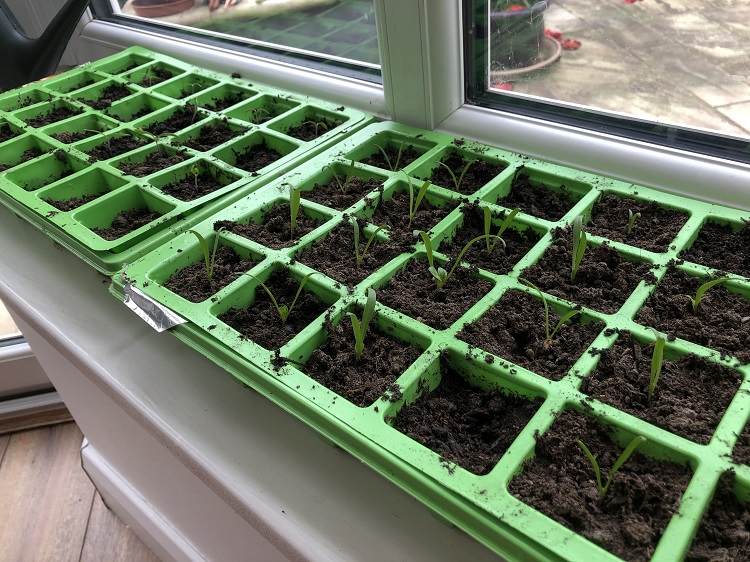 maintain good mental and physical health, and growing food instead of just picking up pre-packaged goods, immediately cuts down on waste and ultimately reconnects us with the earth.
maintain good mental and physical health, and growing food instead of just picking up pre-packaged goods, immediately cuts down on waste and ultimately reconnects us with the earth.
Julie Crenn, a fellow Food Specialist and Co-Leader of the Food Safety and Quality Management (e-learning) Programme, says that anyone with access to an outside space can grow a range of foods, safely, quickly and with relative ease. Julie recommends tomatoes as being very easy to grow and maintain, and she says potatoes take very little effort, as do courgettes and cucumbers. All they need is sunshine and the right orientation. “People don’t need a huge plot of land, you can use gro-bags and pots to grow fruits, veg and herbs on a patio or balcony or even a sunny windowsill at a push.”
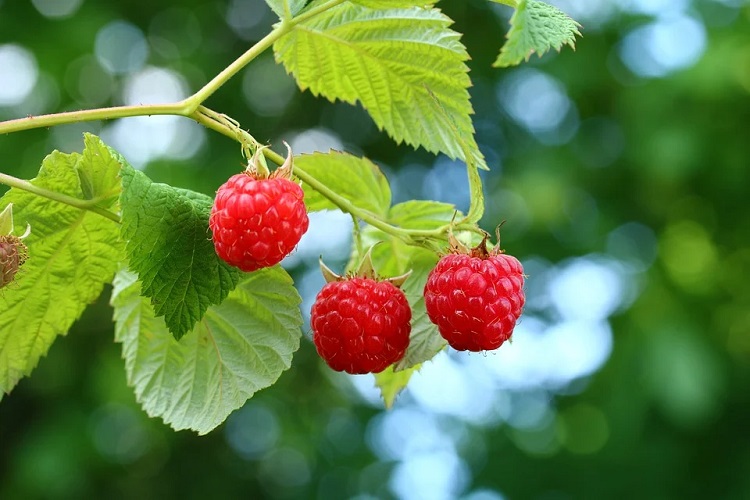 Dr Fuchs warns that caution should always be exercised in terms of what substances we put on our vegetable patch, he says: “it’s a question of safety; a lot of people like the idea of growing their own produce because they can do it organically, i.e. without using chemicals, but if people aren’t used to growing at home, then these are things they need to consider; for instance, what else are they putting on their vegetables or fruit produce to help it grow?”
Dr Fuchs warns that caution should always be exercised in terms of what substances we put on our vegetable patch, he says: “it’s a question of safety; a lot of people like the idea of growing their own produce because they can do it organically, i.e. without using chemicals, but if people aren’t used to growing at home, then these are things they need to consider; for instance, what else are they putting on their vegetables or fruit produce to help it grow?”
“People think manure is a safe, natural fertiliser but we have to be careful where it’s come from”, he says: “you can’t just pile on fresh manure and hope for the best. Compost and animal manure bought from a garden center is fine, but if you’ve just acquired it from the farm down the road, you must be careful as it’s full of pathogenic bacteria. Manure has to be treated in order to kill off the pathogens within it. Historically In some parts of the world people used so-called ‘night soil’, which is basically human excrement, to manure their fields. While we are all keen on not wasting anything, this is something we would never advise!”
Dr Fuchs explains that if you’re using composted or treated manure then it needs to be added 90 days prior to harvest and only on produce that does not come into direct 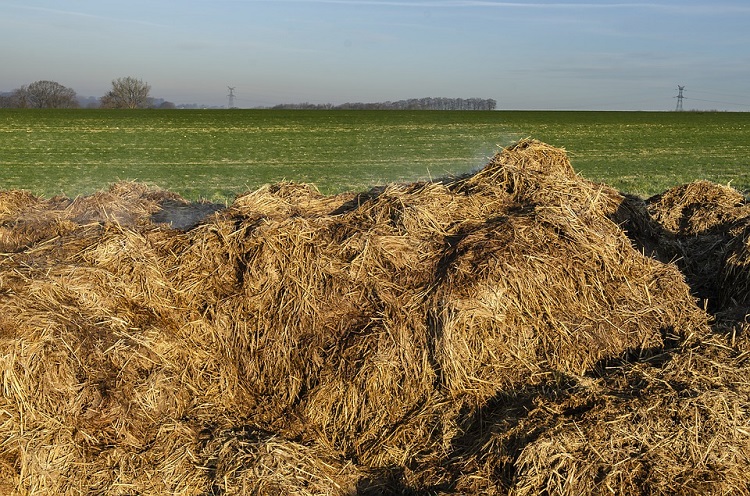 contact with the soil, like raspberries or beans which grow on long canes, or anything that grows above ground on bushes. If you’re growing root crops like carrots, potatoes or turnips, etc. then use it 120 days in advance. And you should never put manure on top of plants like lettuce, spinach or herbs.
contact with the soil, like raspberries or beans which grow on long canes, or anything that grows above ground on bushes. If you’re growing root crops like carrots, potatoes or turnips, etc. then use it 120 days in advance. And you should never put manure on top of plants like lettuce, spinach or herbs.
Julie Crenn adds: “when you pick your produce, you’ve got to make sure you handle it safely and use hygienic procedures, so wash your hands, and always wash the produce before you eat it. Even if no pesticides or chemicals have been used – there could be bacteria in the soil, or animals may have contaminated the area.”
But with people so used to buying their produce all clean and wrapped in plastic with a date stamped on it, growing, picking and storing our own may induce an element of self-doubt. Without a use-by date how do we know if it’s good to eat?
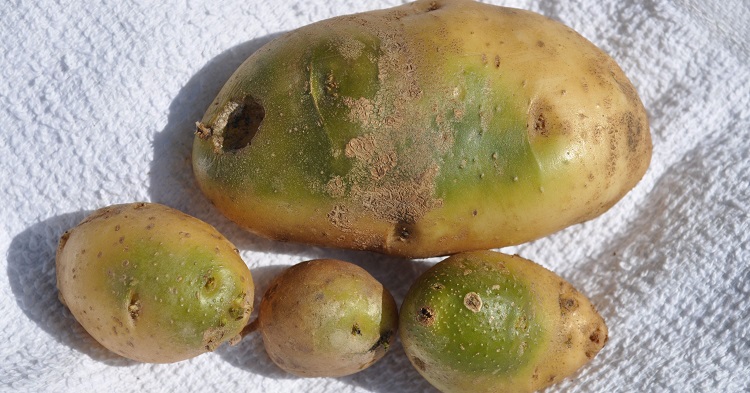 Most of the time the use-by date errs on the side of caution, Dr Fuchs says: “as long as the food is not smelling bad or leaking juices, it is probably fine. Potatoes, for instance, can look awful with sprouting eyes and marks on them but if you cut these off, they’re still good to eat. What you need to be aware of in potatoes is the green patches of chlorophyll that can be a sign of a toxin called solanine, so always throw those ones away. Eating potatoes that contain very high levels of solanine can cause nausea, vomiting and headaches, or in extreme cases can result in more serious illnesses.”
Most of the time the use-by date errs on the side of caution, Dr Fuchs says: “as long as the food is not smelling bad or leaking juices, it is probably fine. Potatoes, for instance, can look awful with sprouting eyes and marks on them but if you cut these off, they’re still good to eat. What you need to be aware of in potatoes is the green patches of chlorophyll that can be a sign of a toxin called solanine, so always throw those ones away. Eating potatoes that contain very high levels of solanine can cause nausea, vomiting and headaches, or in extreme cases can result in more serious illnesses.”
We have to learn to trust our own judgement again, explains Julie: “when it’s time to harvest, make sure that the fruit or veg don’t have any signs of mould, usually grey or brown patches, a sign that there might be toxins present. But don’t be put off by an insect bite or hole, that bit can just be cut out and the produce consumed safely.”
Both Julie and Richard agree that the correct storage for your harvested home-grown food is key, and they recommend looking online to find the best methods for whatever foodstuff you’ve grown. Onions and potatoes, for example, have a long shelf life and just need to be cleaned and stored in a cool, dark place, and the more perishable products like soft fruits and berries can be turned into jam. Julie recommends blanching (where the food is plunged briefly into boiling water and then into iced water) and then freezing some other vegetables and fruits to use in the months ahead.
She says that if possible, we should pick food as we need it: “keep it on the plant then you can eat as fresh as possible, which is better nutritionally too. If a carrot is a bit soft or has a dark mark, just cut off the bad bits, but don’t waste 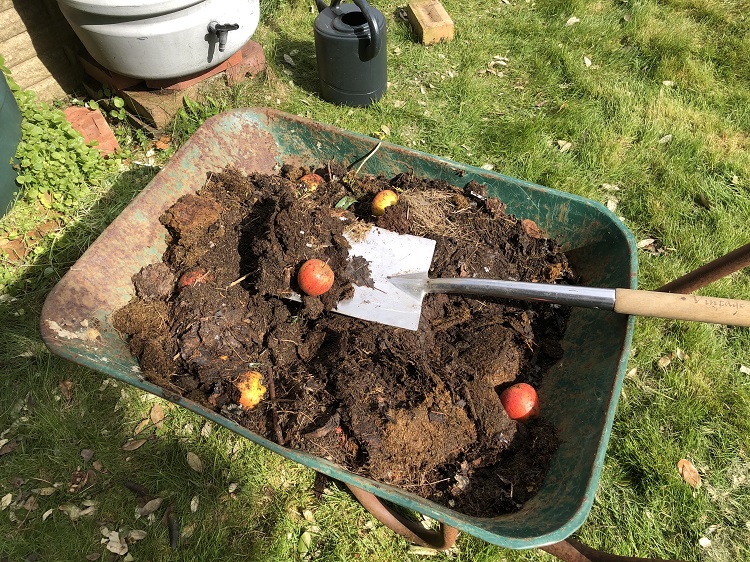 the firm parts – they can be eaten. And whatever you discard, don’t just bin it – you can put any plant food waste into the composter. Egg shells can be used to discourage slugs, and coffee grounds are full of nutrients and are brilliant to put on crops to help them grow – they enrich the soil.”
the firm parts – they can be eaten. And whatever you discard, don’t just bin it – you can put any plant food waste into the composter. Egg shells can be used to discourage slugs, and coffee grounds are full of nutrients and are brilliant to put on crops to help them grow – they enrich the soil.”
Making your own garden composter couldn’t be simpler: all you need is some pieces of wood to form four sides of a box which you can put straight on the ground, then you just start to fill it. Julie explains the basics: “angle it towards the sun so you have heat, keep it moist, turn it over every so often and bingo – healthy, nutritional compost – perfect to grow your own. Don’t put any meat or fish leftovers in the compost bin – that will only attract pests. Also, don’t put in any diseased plants, as that can contaminate the compost. Cardboard is great, as are peelings and eggshells – and then you keep it moist and aerated so that the bacteria can do their job. The worms will find their way in and do their job perfectly too.”
To find out more about:
Applied Food Safety & Quality Management MSc
Food Safety and Quality Management (e-learning) Programme

